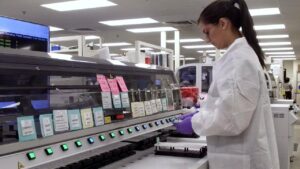Despite being informed by 3M as early as 2003 about the dangerous chemicals in sewage sludge used in fertilizers, the EPA disregards the risks, perpetuating contamination concerns across agricultural lands.
EPA’s Ongoing Promotion of Toxic Sludge Fertilizer Despite Decades-Old Warnings

EPA’s Ongoing Promotion of Toxic Sludge Fertilizer Despite Decades-Old Warnings
The Environmental Protection Agency continues to endorse sewage sludge as fertilizer, despite early warnings from 3M about the presence of harmful “forever chemicals” in the material.
The Environmental Protection Agency (EPA) has faced increasing scrutiny over its enduring promotion of sewage sludge as a fertilizer, a practice that has raised serious public health concerns. This issue comes to light as new evidence reveals that the vitally hazardous “forever chemicals,” also known as PFAS, have been contaminating sewage sludge used in agricultural settings for years.
In the early 2000s, scientists at the chemical giant 3M made a chilling discovery: significant amounts of PFAS were being found in the sewage, which was subsequently spread as fertilizer across American farmlands. PFAS, notorious for their resilience in the environment and associated health risks, have been linked to serious conditions such as cancer and birth defects. Alarmingly, these findings, which 3M shared with the EPA in a meeting back in 2003, have largely been overlooked.
The continued endorsement by the EPA of sewage sludge as a viable fertilizer, without mandatory PFAS testing, has drawn severe criticism from whistle-blowers, environmental activists, and former agency scientists. David Lewis, a former microbiologist at the EPA, expressed concern over persistent contamination risks. He contended that the application of contaminated sewage sludge effectively renders soil permanently tainted with toxic chemicals.
Despite the strong evidence presented by both 3M and numerous studies over the years, the EPA's stance on sewage sludge and fertilizers remains unchanged. There is growing alarm regarding the agency's negligence in addressing these safety protocols, pushing advocates for agricultural health and pesticide reform to demand immediate action. As awareness of PFAS dangers continues to spread, the call for better regulation and awareness in fertilizer practices has never been more urgent.
In the early 2000s, scientists at the chemical giant 3M made a chilling discovery: significant amounts of PFAS were being found in the sewage, which was subsequently spread as fertilizer across American farmlands. PFAS, notorious for their resilience in the environment and associated health risks, have been linked to serious conditions such as cancer and birth defects. Alarmingly, these findings, which 3M shared with the EPA in a meeting back in 2003, have largely been overlooked.
The continued endorsement by the EPA of sewage sludge as a viable fertilizer, without mandatory PFAS testing, has drawn severe criticism from whistle-blowers, environmental activists, and former agency scientists. David Lewis, a former microbiologist at the EPA, expressed concern over persistent contamination risks. He contended that the application of contaminated sewage sludge effectively renders soil permanently tainted with toxic chemicals.
Despite the strong evidence presented by both 3M and numerous studies over the years, the EPA's stance on sewage sludge and fertilizers remains unchanged. There is growing alarm regarding the agency's negligence in addressing these safety protocols, pushing advocates for agricultural health and pesticide reform to demand immediate action. As awareness of PFAS dangers continues to spread, the call for better regulation and awareness in fertilizer practices has never been more urgent.






















